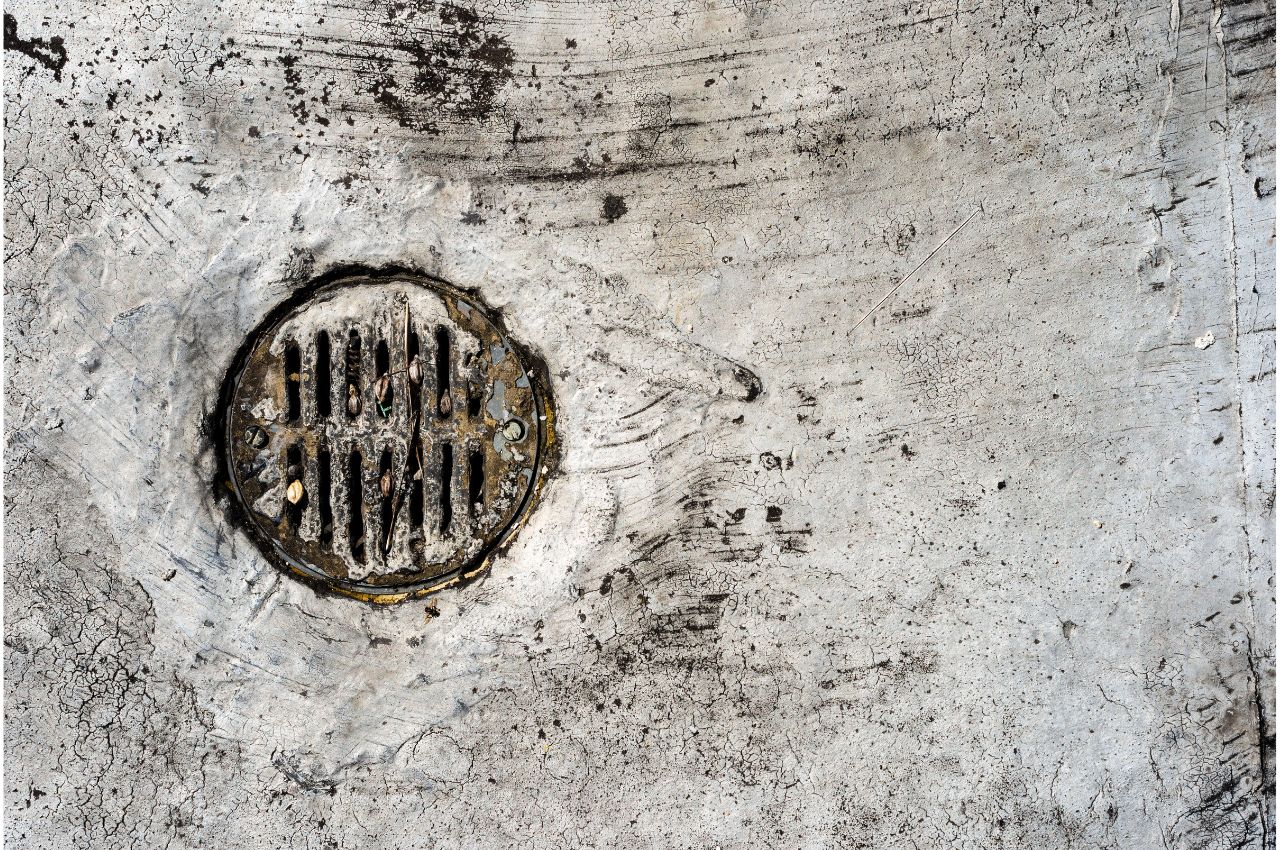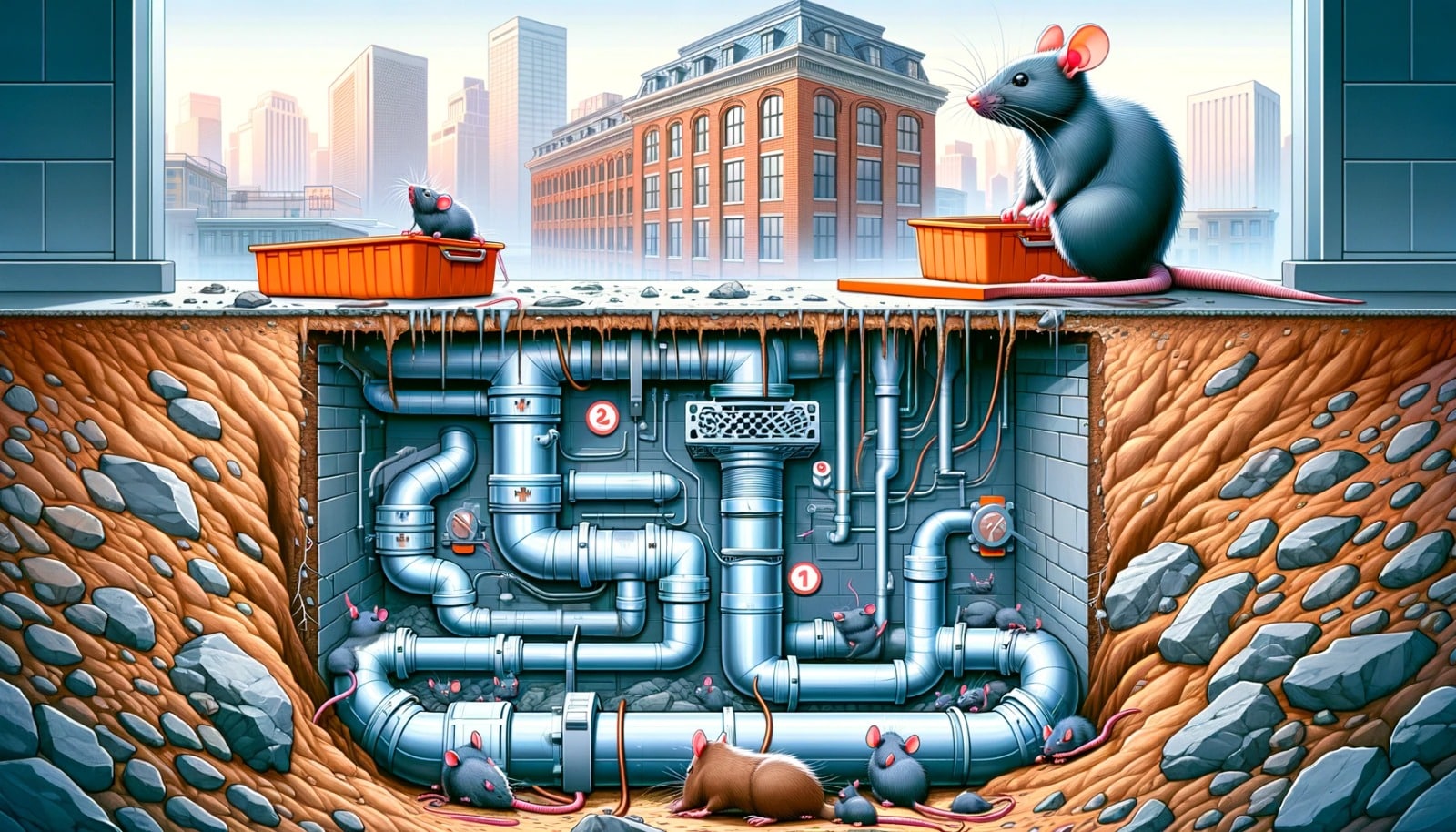Tired of dealing with the relentless issue of rats infiltrating your property’s drainage systems? You’re not alone. Countless property managers and residents grapple with this nuisance, often facing the daunting task of finding effective, long-term solutions. Rat infestations in sewer systems are more than just a minor inconvenience; they pose significant health risks and structural damages. Fortunately, there’s a ray of hope in this battle against rodent invasions: rat blockers.
Understanding Rat Infestations
The sight of a rat scurrying through a property can send shivers down the spine of even the most seasoned property manager. Rats, especially in urban areas, find the labyrinth of sewer systems an ideal habitat. These rodents are not just a source of discomfort and fear; they carry diseases, contribute to unsanitary conditions, and can even cause structural damage. The challenge of rats in sewer systems is compounded by their impressive breeding rates, making swift and effective control measures imperative. This is where the role of rat blockers becomes critical, offering a proactive approach to managing these unwanted guests.
Rat Blocker for Drains: An Overview
At its core, a rat blocker is a simple yet ingenious device designed to prevent rats from accessing properties through drainage pipes. Installed within the pipes, these blockers allow water and waste to pass through while effectively barring rats from entering. Different models cater to various pipe sizes and types, ensuring that there’s a suitable option for every drainage system. The beauty of rat blockers lies in their non-invasive nature; they provide a humane solution to pest control without the use of harmful chemicals or traps.

No More Resident Complaints.
The Working Mechanism of Rat Blockers
Diving deeper into the workings of rat stoppers reveals a blend of mechanical genius and practical design. These devices typically consist of a flap or a series of flaps made from durable materials like stainless steel or heavy-duty plastics. When installed, these flaps move with the flow of water, letting waste pass while snapping shut in the presence of an intruding rat. Some advanced models even boast smart features, like sensors that can detect the direction of water flow, ensuring a foolproof barrier against rodents. The design of these blockers is such that they can withstand the harsh conditions of sewer systems, guaranteeing longevity and effectiveness.
Installation and Maintenance of Rat Blockers
Installing a rat blocker might seem daunting, but it’s a straightforward process that can be a game-changer in pest control. The first step is to identify the right size and type of blocker for your drainage system. It’s crucial to ensure that the blocker fits snugly within the pipe to prevent any bypass by cunning rodents. Once the right model is selected, the installation process typically involves inserting the blocker into the pipe and securing it in place. Some models may require professional installation, especially in complex sewer systems.
Maintenance of these blockers is relatively low-key. Regular checks to ensure that they are free from debris and functioning correctly are usually sufficient. Some models may require periodic lubrication of moving parts or adjustments to ensure they maintain their effectiveness. This proactive approach to maintenance not only ensures the longevity of the device but also guarantees continuous protection against rat intrusions.
Rat Blockers as a Preventive Solution
Understanding the crucial role of prevention in pest management, rat blockers emerge as a proactive tool, far surpassing the reactive measures traditionally employed in pest control. This shift from dealing with infestations after they occur to stopping them before they start marks a significant advancement in property management strategies. Traditional methods, such as traps and poisons, often address the problem only after rats have breached the property, leading to potential damage and health risks. Rat blockers, on the other hand, stop rats at the source – the sewer system – ensuring they never even make it into residential or commercial spaces. This not only enhances the safety and comfort of residents but also saves property managers from the costly and time-consuming processes involved in eradicating established infestations.

Benefits of Rat Blockers for Property Management Companies
Property Management Companies (PMCs) stand to gain substantially from integrating rat blockers into their pest control arsenal. First and foremost, the simplicity and effectiveness of rat blockers significantly reduce the confusion and frustration that typically accompanies pest control issues. The time and money saved in managing pest control are substantial, especially when considering the alternative – coordinating with service providers, scheduling maintenance calls, and addressing resident complaints. Furthermore, PMCs can sidestep the often contentious debates about who bears the cost of pest control, as rat blockers offer a long-term, cost-effective solution.
An often-overlooked benefit is the positive impact on a PMC’s reputation. With 84% of households experiencing a pest infestation each year, being proactive about pest control can set a property apart, leading to improved occupancy rates and resident retention. This proactive approach also helps avoid larger, more costly infestations that can arise from unreported or poorly managed pest issues. Impressively, PMCs leveraging rat blockers also report smoother operations and enhanced resident satisfaction, leading to stellar reviews and an influx of new business.
Advantages for Residents
Residents enjoy numerous benefits when their homes are equipped with rat blockers. The most obvious advantage is the assurance of a pest-free environment, which translates to a significant improvement in living conditions and peace of mind. This is particularly relevant considering that 70% of residents resort to DIY pest control measures, which often prove ineffective and prolong the issue. With rat blockers, residents no longer have to worry about the costs and hassles associated with traditional pest control methods. The average cost for a single pest control treatment stands at $223, a significant expense that can be mitigated with the installation of rat blockers. Additionally, the removal of the need to negotiate with property managers over pest control responsibilities is a welcome relief for many residents.
The use of advanced Pest ID software in conjunction with rat blockers further enhances the resident experience. This technology helps identify the pest problem through a simple questionnaire, ensuring that the correct service is provided quickly and efficiently. As a result, residents can enjoy a more accessible and affordable approach to pest control, with the assurance that issues will be addressed in a timely manner.
Legal and Environmental Considerations
When implementing any pest control solution, it is critical to consider the legal and environmental implications. Rat blockers are designed with these considerations in mind. They offer a humane way to prevent pests without harming them or the environment. Unlike poisons or traps, which can have unintended consequences on wildlife and pets, rat blockers provide a safe, non-toxic solution. They do not involve the use of chemicals or other harmful substances, making them an environmentally friendly option.
From a legal standpoint, rat blockers comply with most regulations concerning pest control. They offer a non-intrusive solution that does not interfere with the natural behaviour of wildlife, thus aligning with wildlife protection laws in many regions. Property managers and residents can have peace of mind knowing that the use of rat blockers is a responsible choice, both environmentally and legally.
Selecting the Right Rat Blocker
Choosing the appropriate rat blocker for a particular drainage system involves several considerations. The size and type of the drainage pipe are primary factors. A rat blocker that fits snugly ensures no rat can bypass the barrier. Material durability is another crucial aspect. Stainless steel and robust plastics offer longevity and withstand the harsh conditions within sewer systems. Additionally, property managers should consider the ease of installation and maintenance. Some rat blockers may require professional installation, especially in complex sewer systems, but many are designed for straightforward, DIY installation.
Rat Blocker Case Studies and Success Stories
Real-world applications of rat blockers provide valuable insights into their effectiveness. For instance, a residential complex in an urban area, plagued by recurrent rat infestations, witnessed a significant decline in pest-related complaints after installing rat blockers. Not only did this enhance resident satisfaction, but it also reduced the property’s pest control expenses. Another case involved a commercial building where rat blockers were integral in maintaining a hygienic and safe environment, crucial for their business operations. These success stories underscore the practicality and effectiveness of rat blockers in diverse settings.
Conclusion
Rat blockers, often overlooked, are indeed unsung heroes in the realm of pest prevention. Their ability to proactively prevent rats from entering properties through drainage systems makes them an invaluable tool for property management companies, residents, and investors alike. By choosing the right rat blocker and understanding its benefits, one can significantly enhance property integrity, resident satisfaction, and overall profitability.
So, why wait for a pest problem to escalate? Explore Pest Share’s innovative solutions and discover how rat blockers can elevate your property management game. Book a demo with Pest Share today and step into a world where pest control is no longer a hassle, but a seamless part of your property management strategy.





